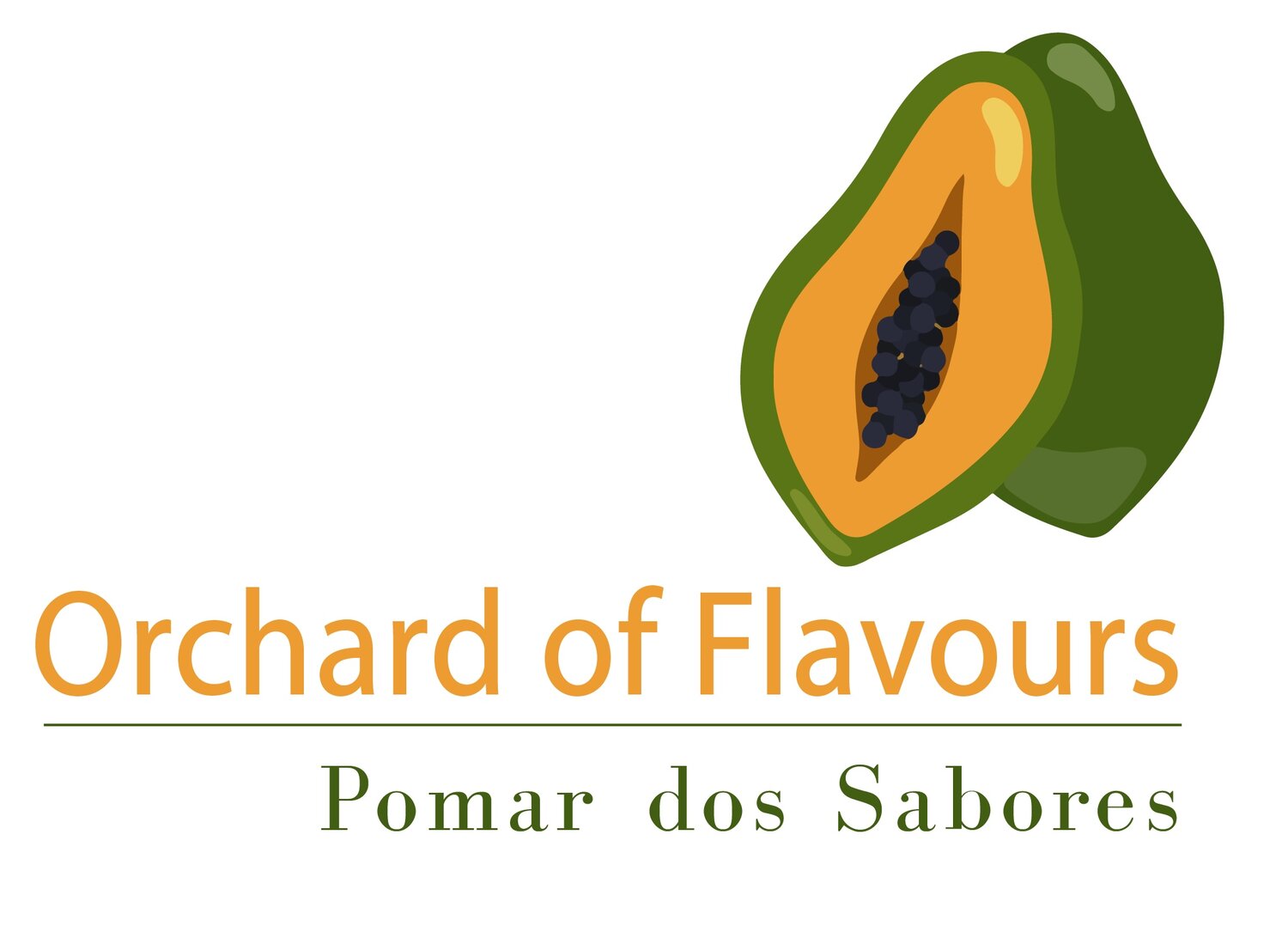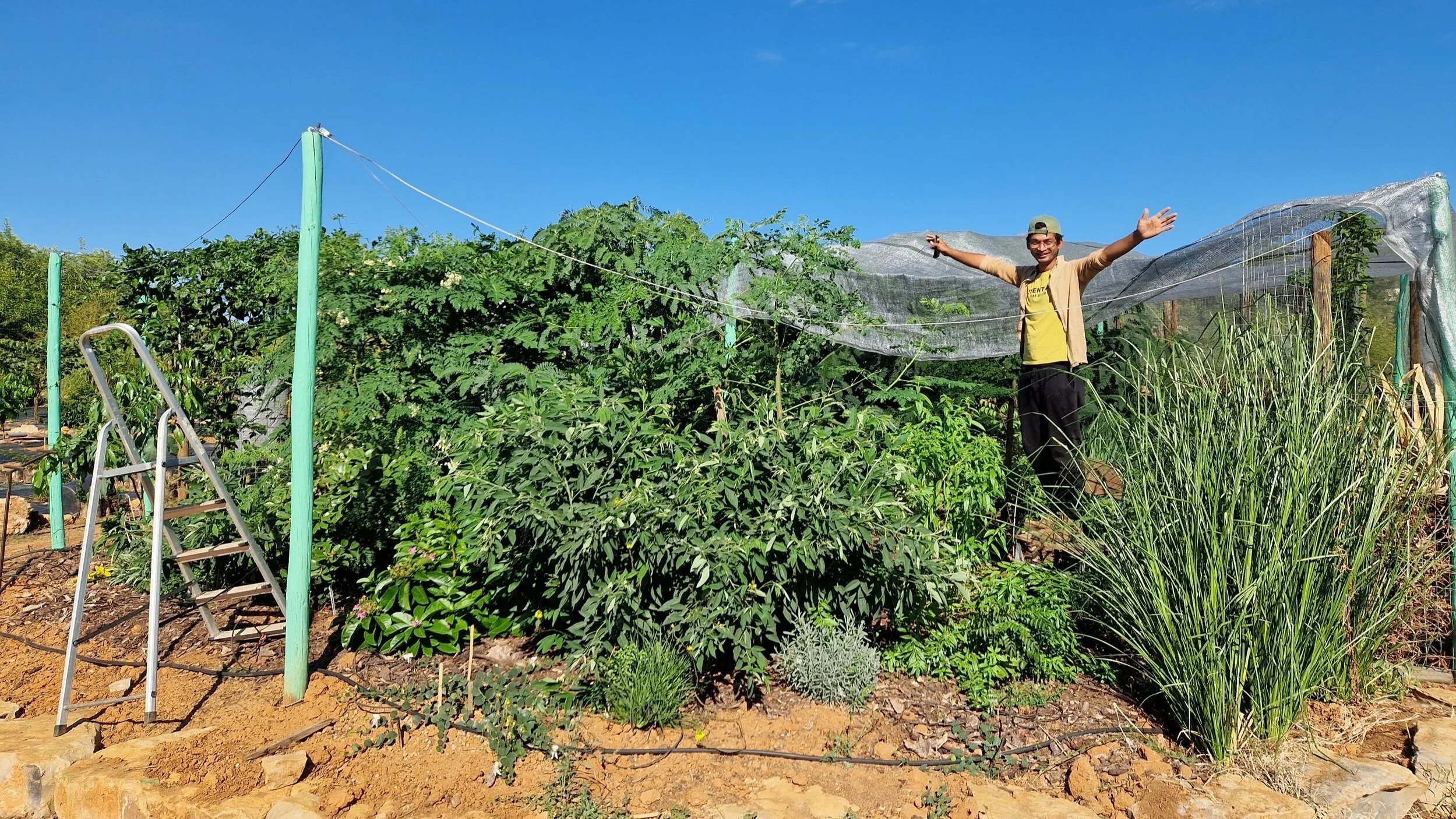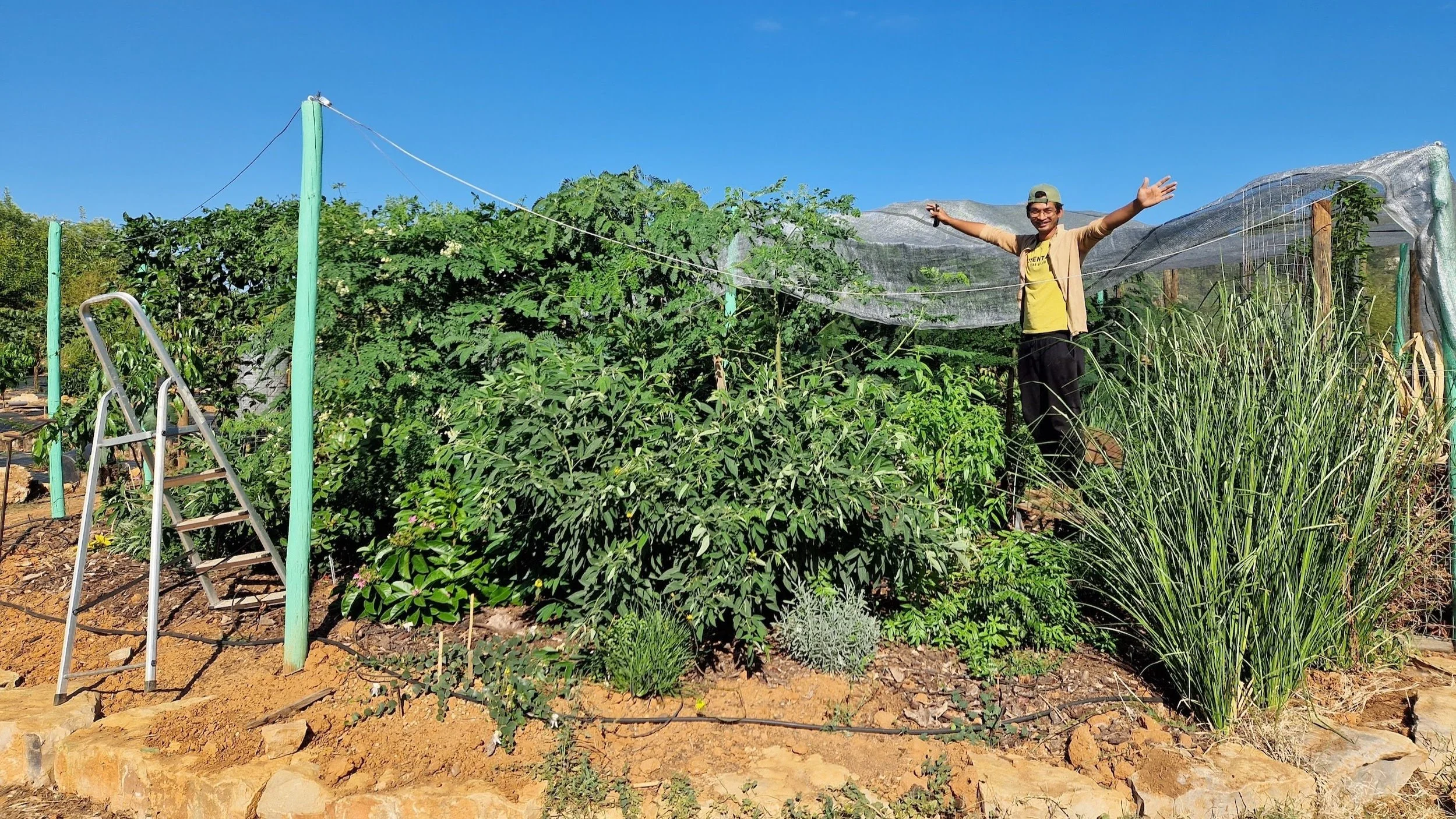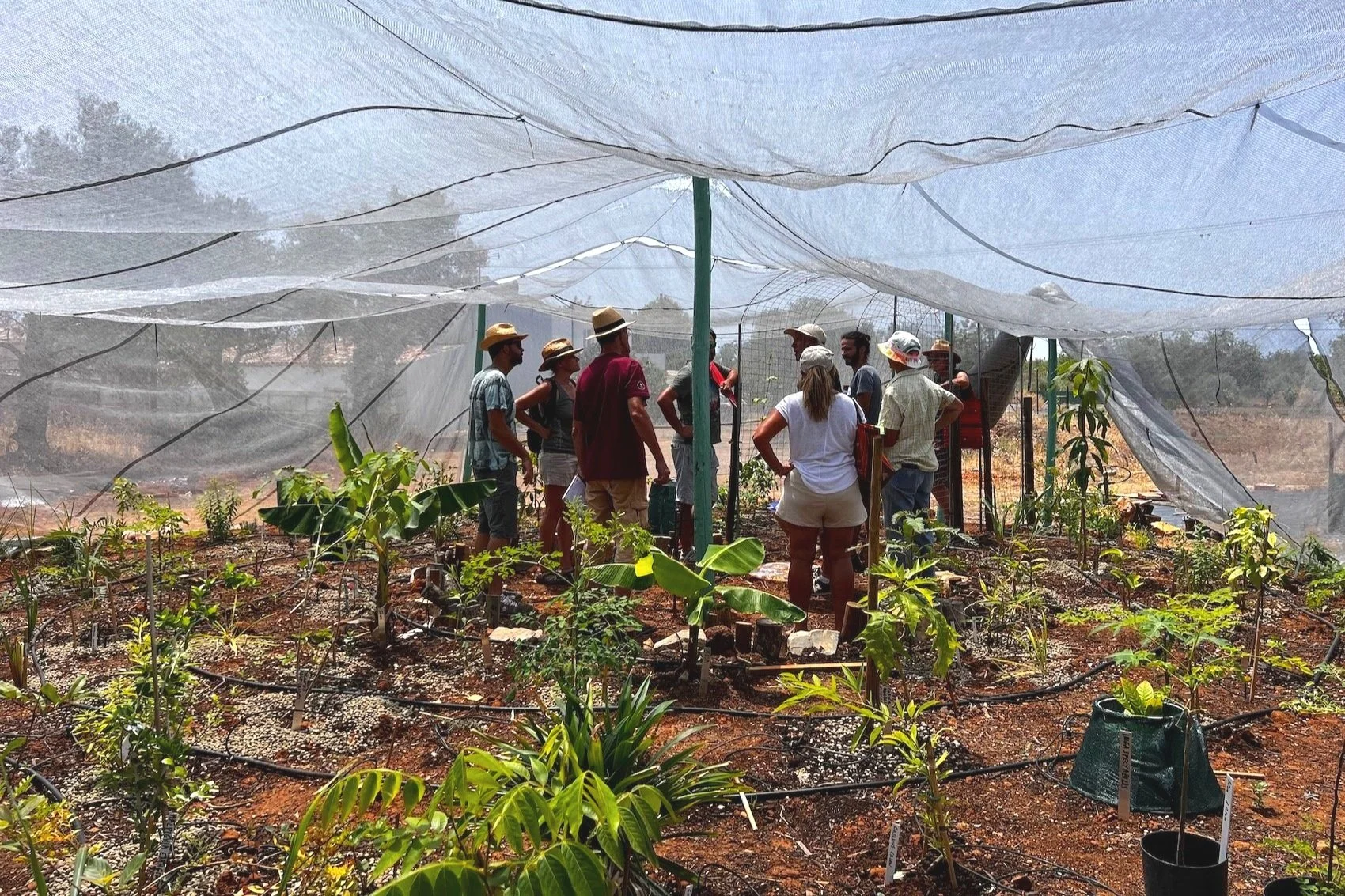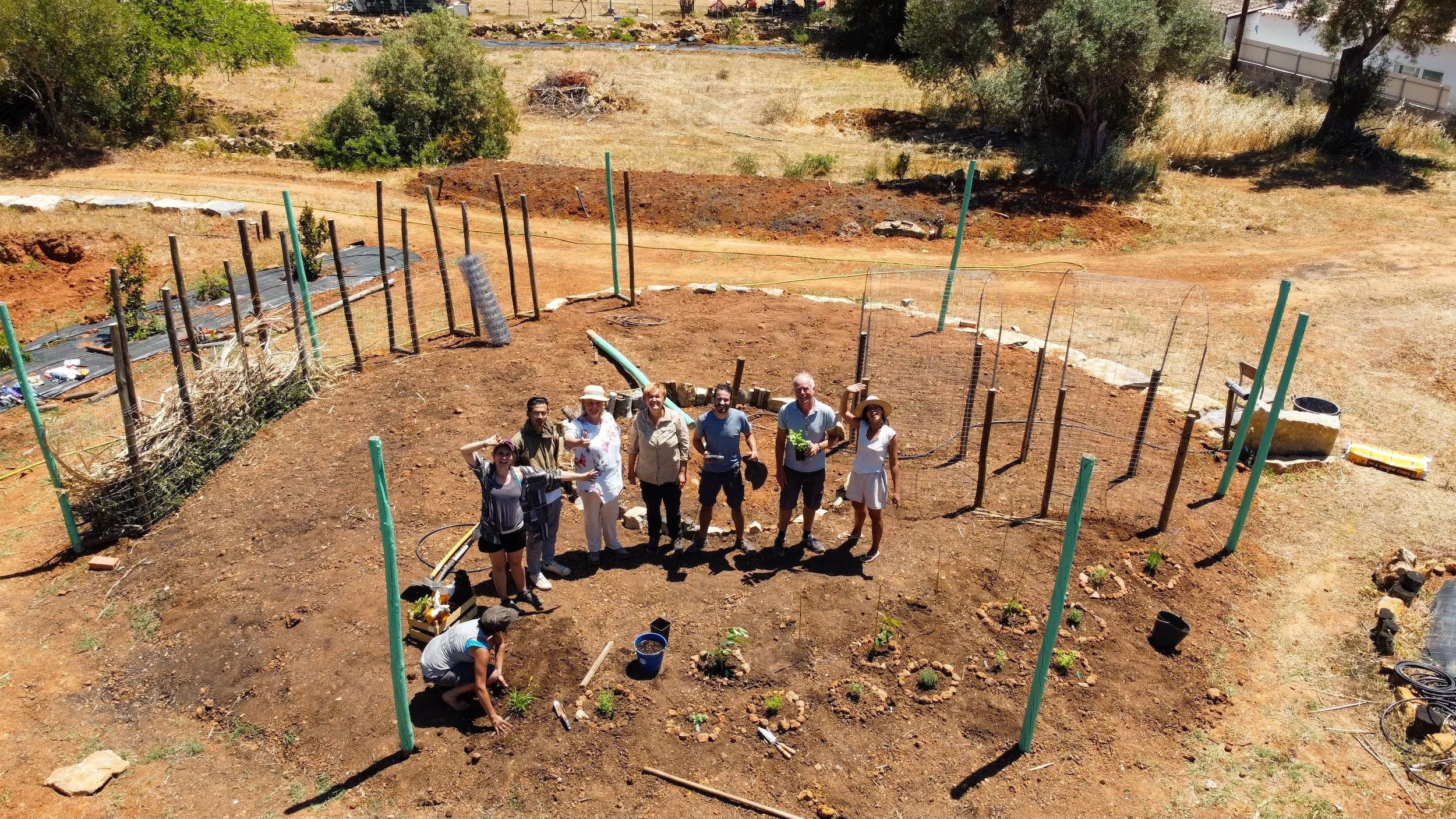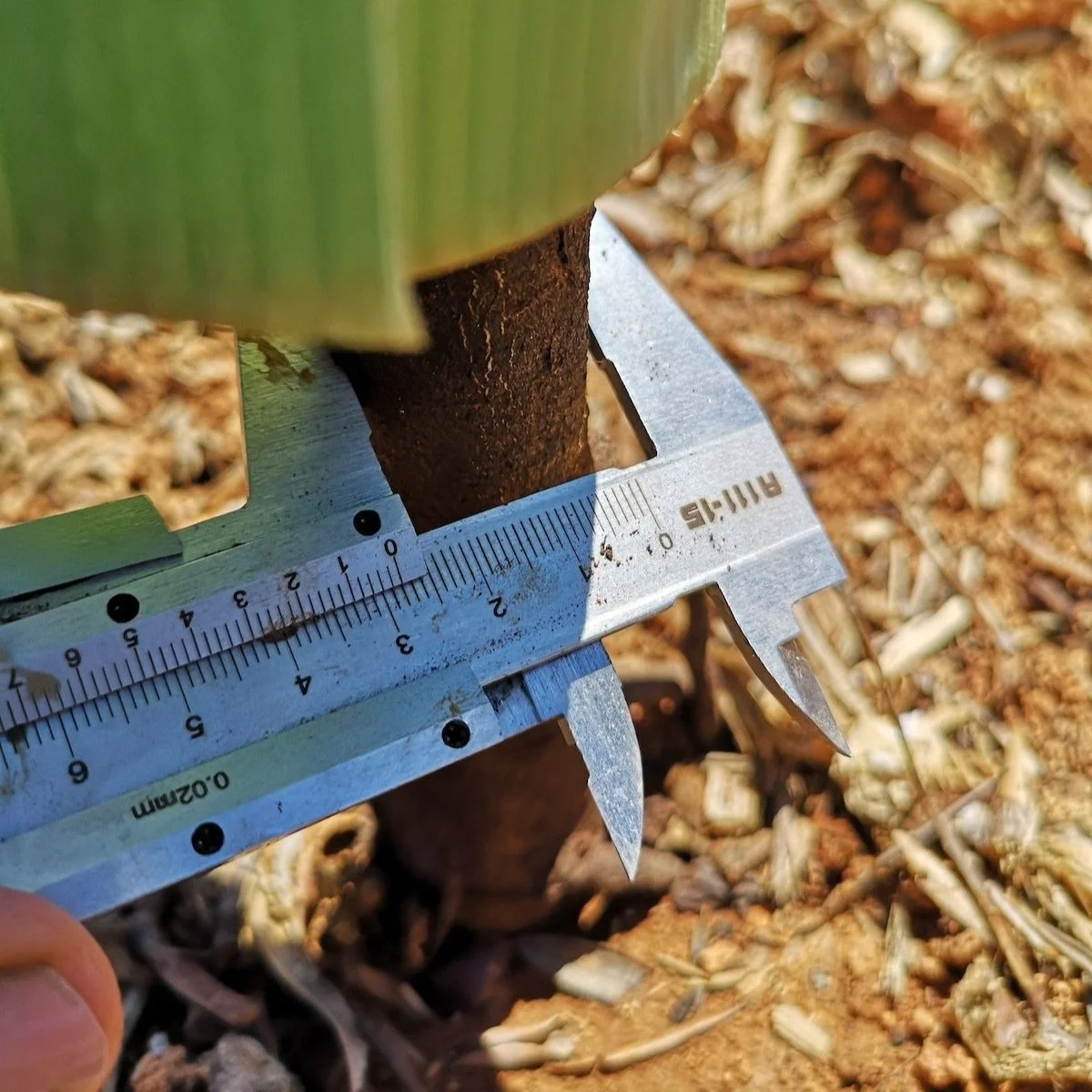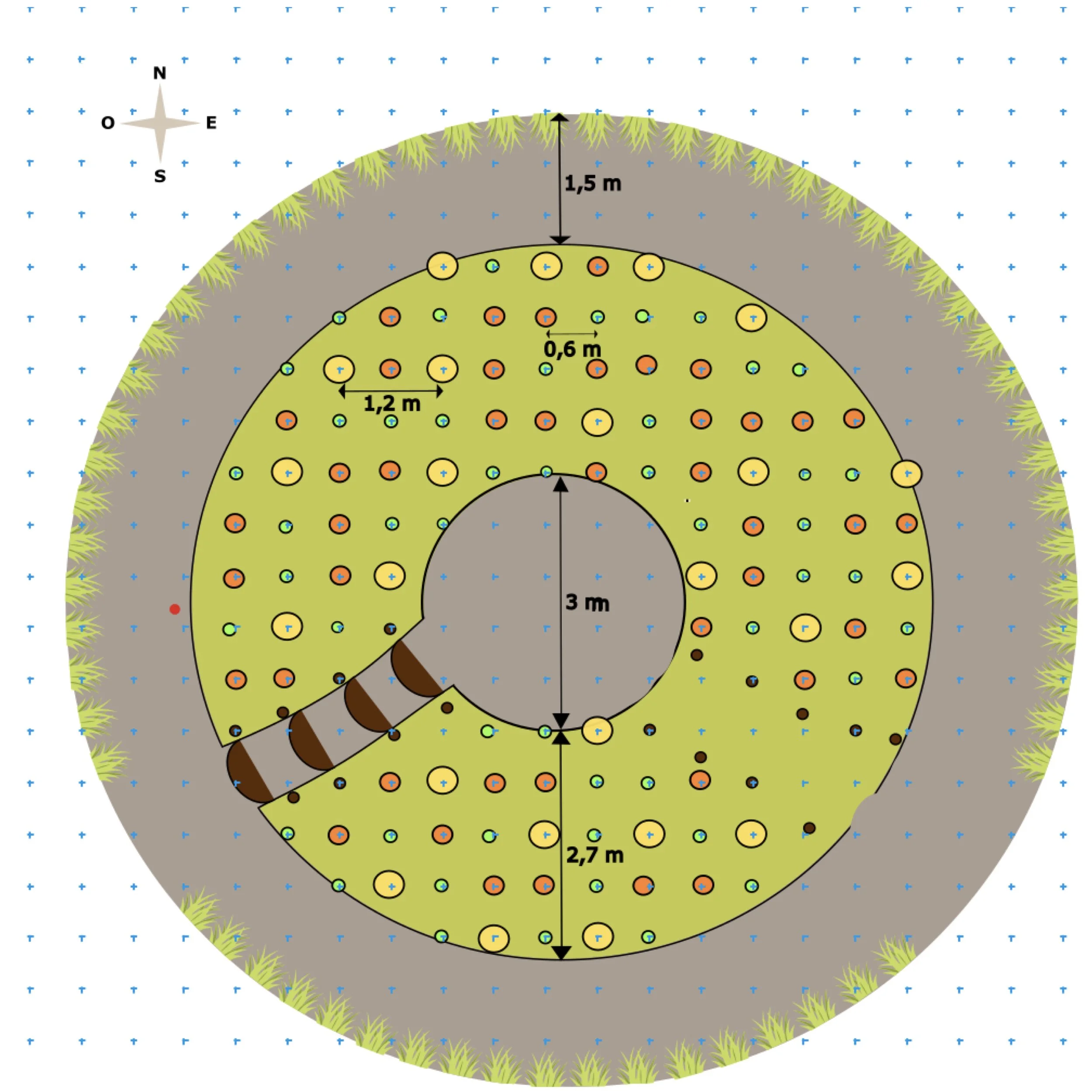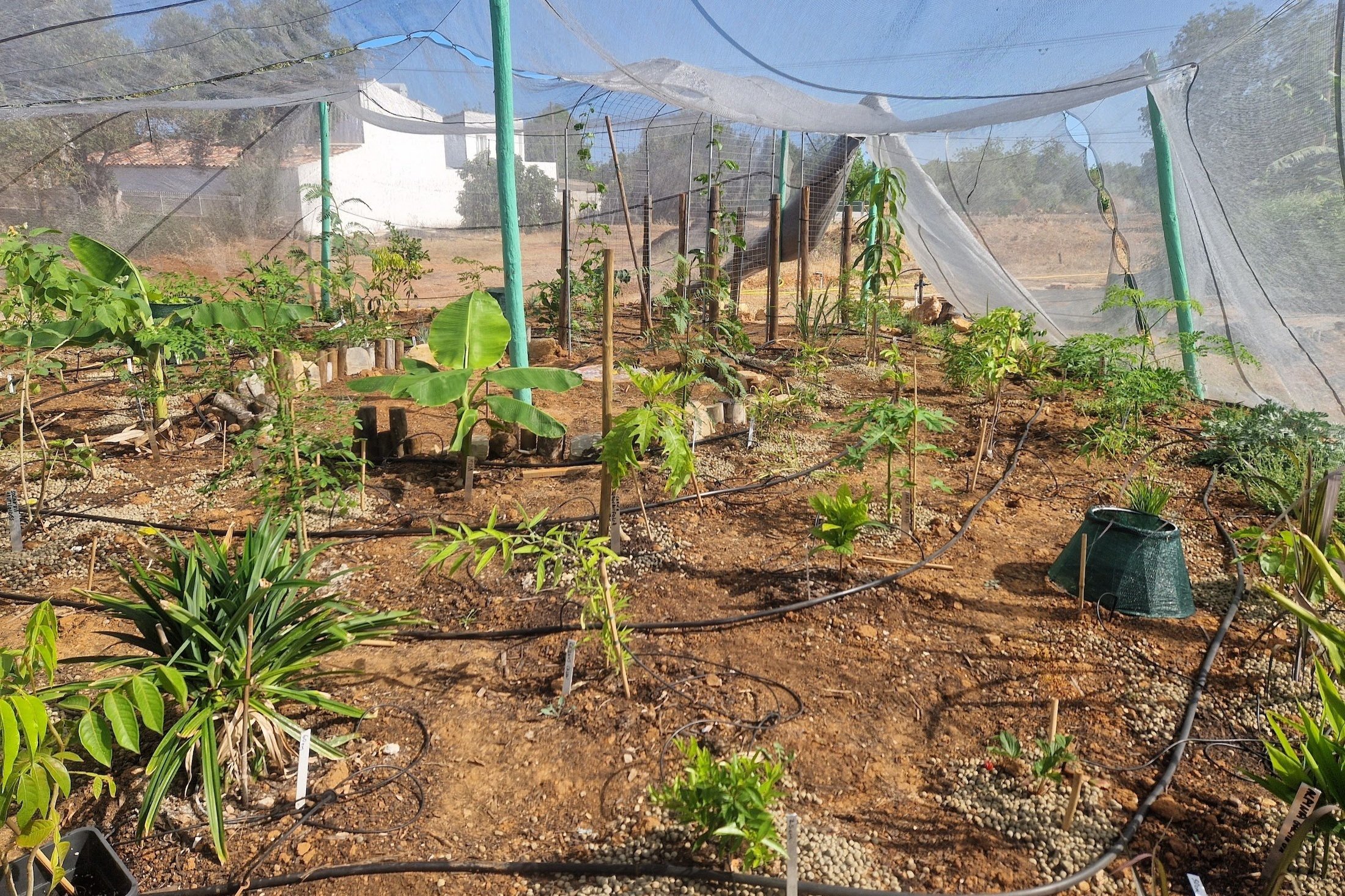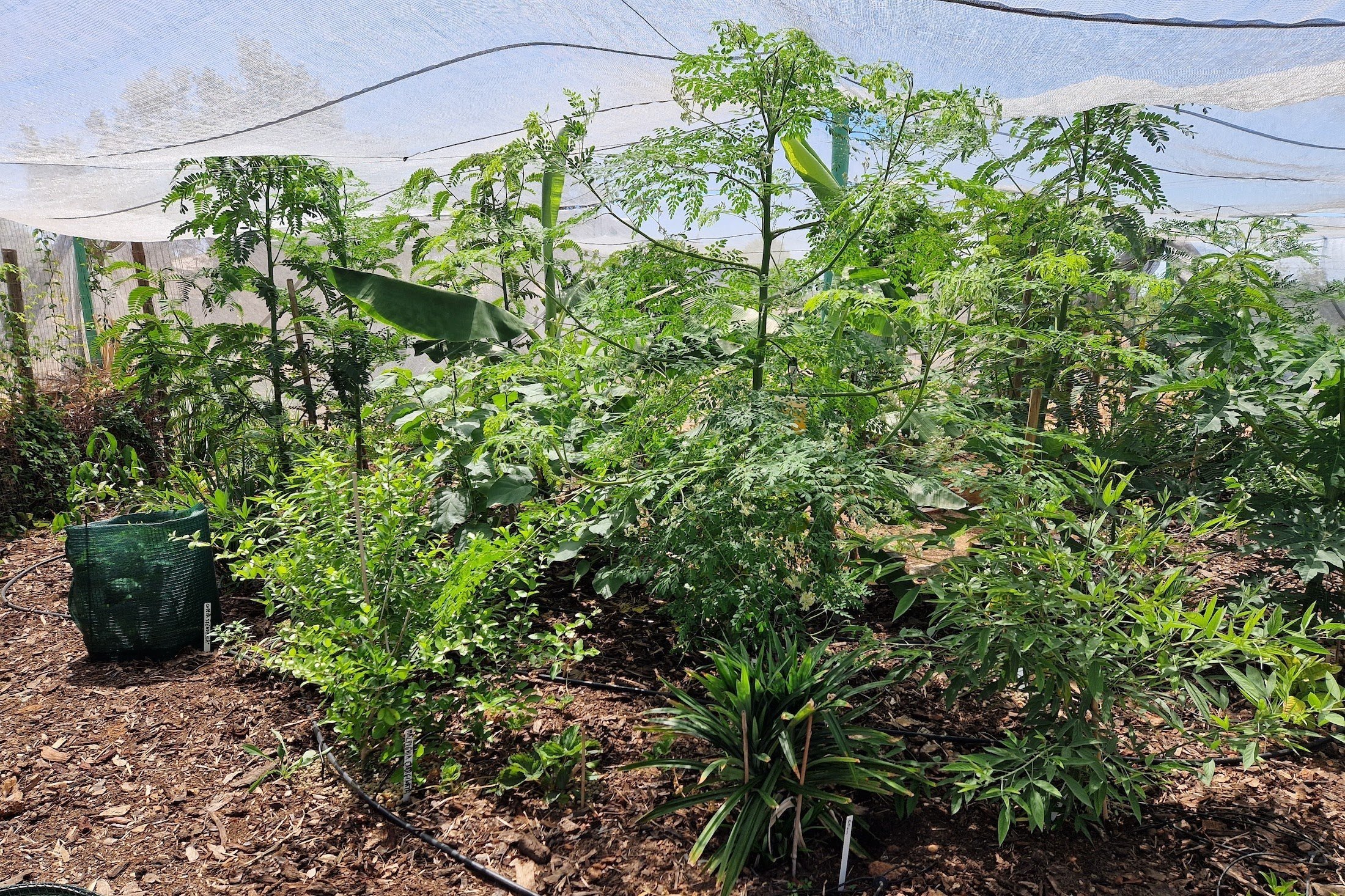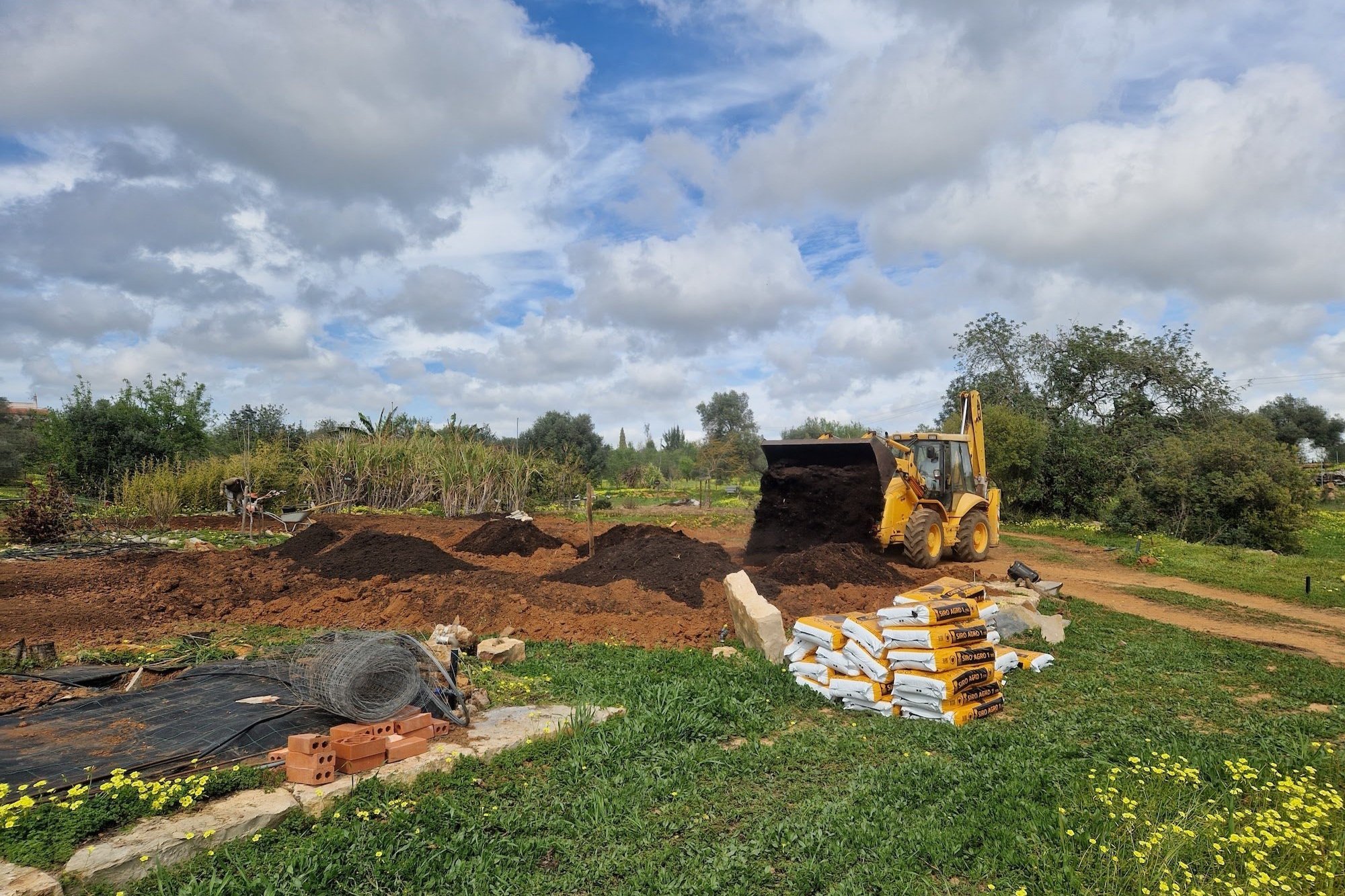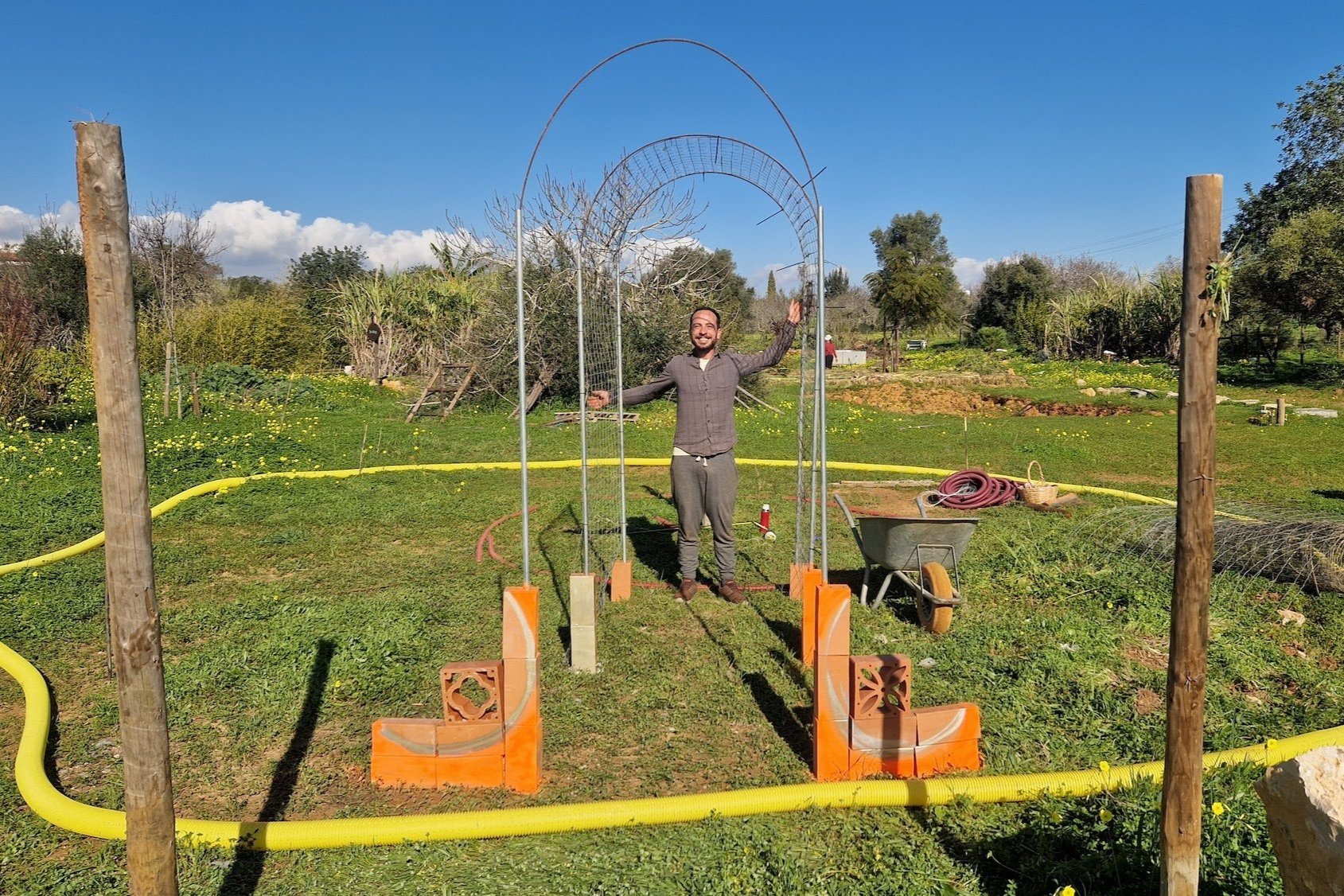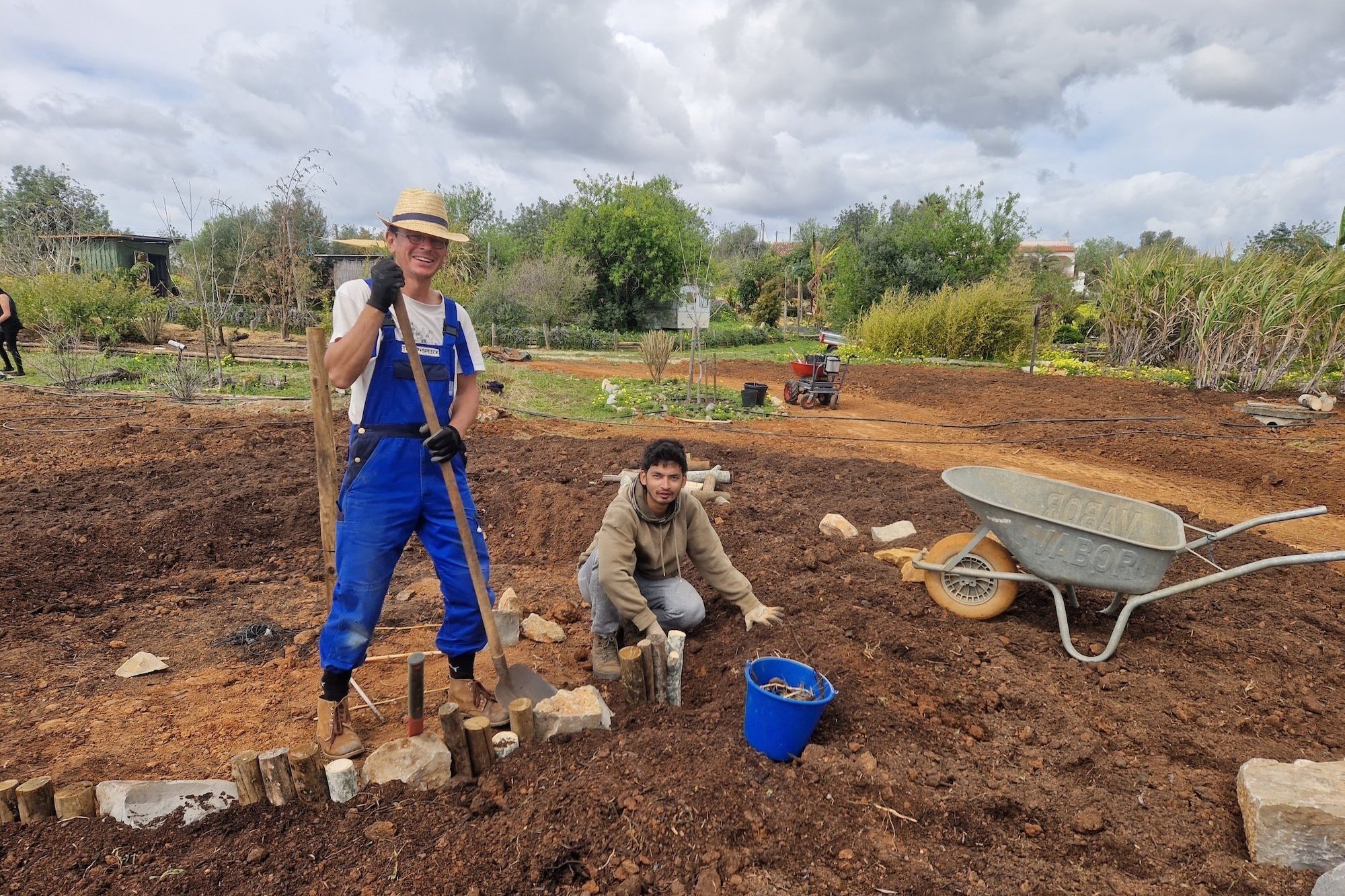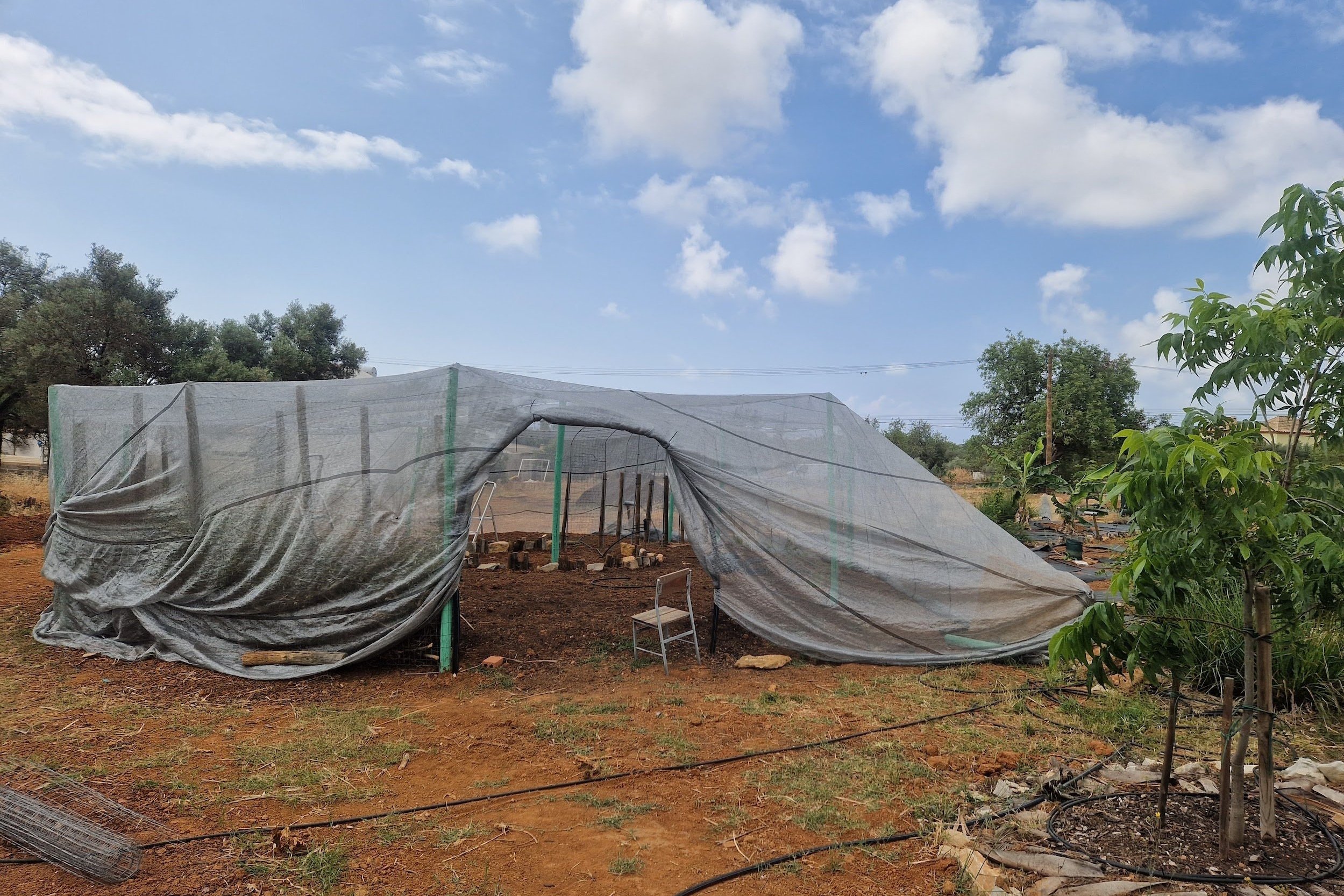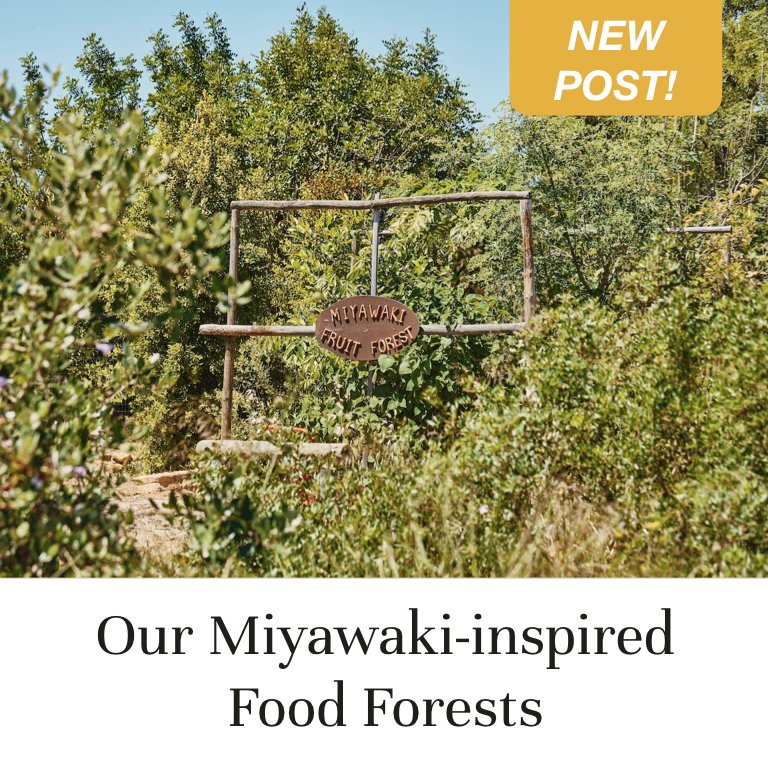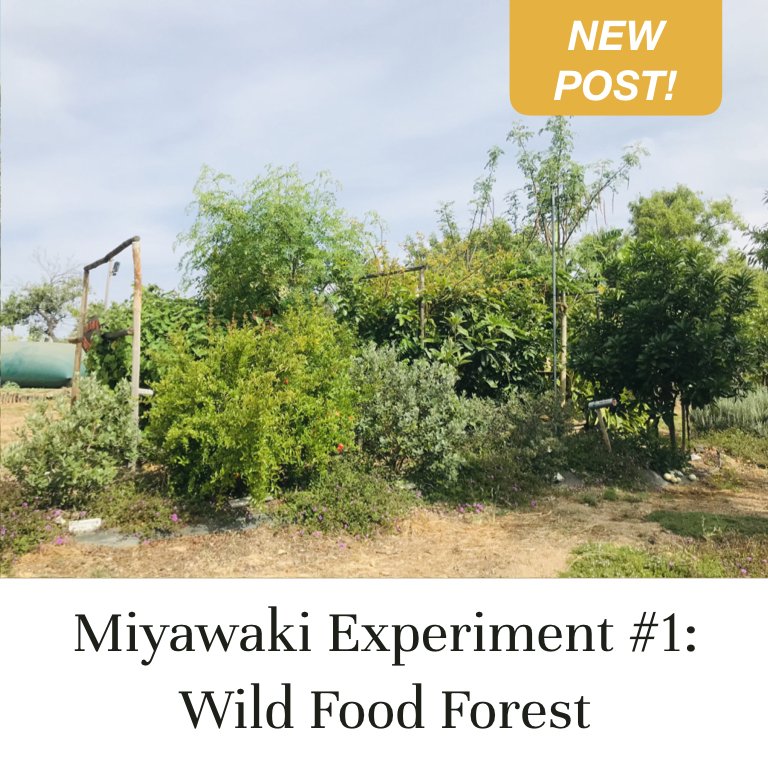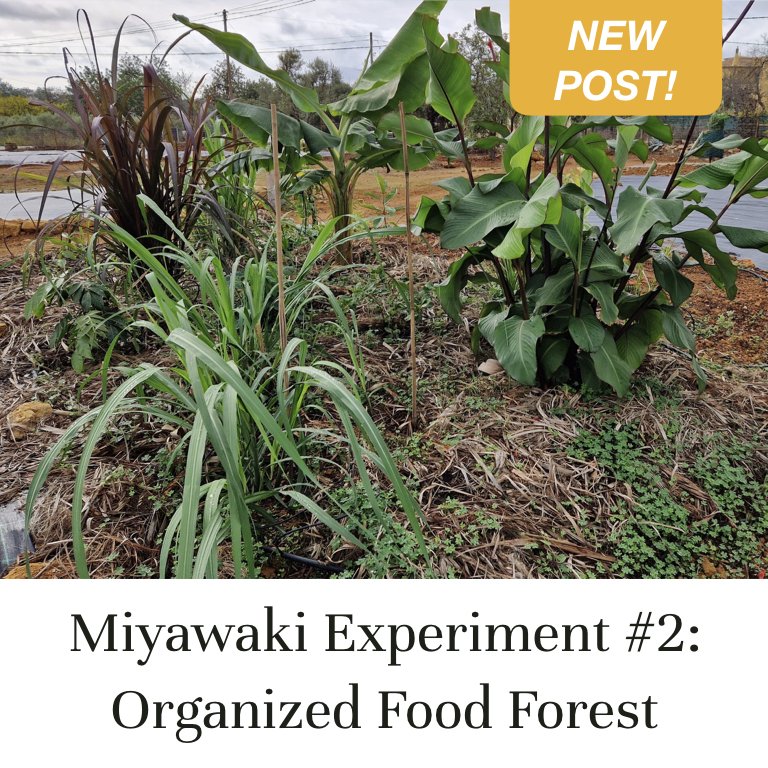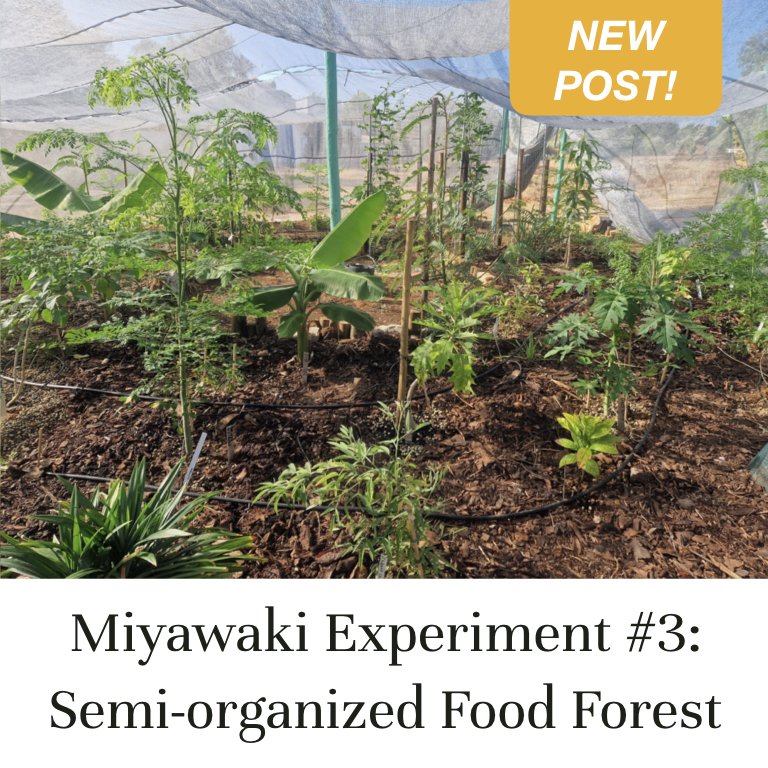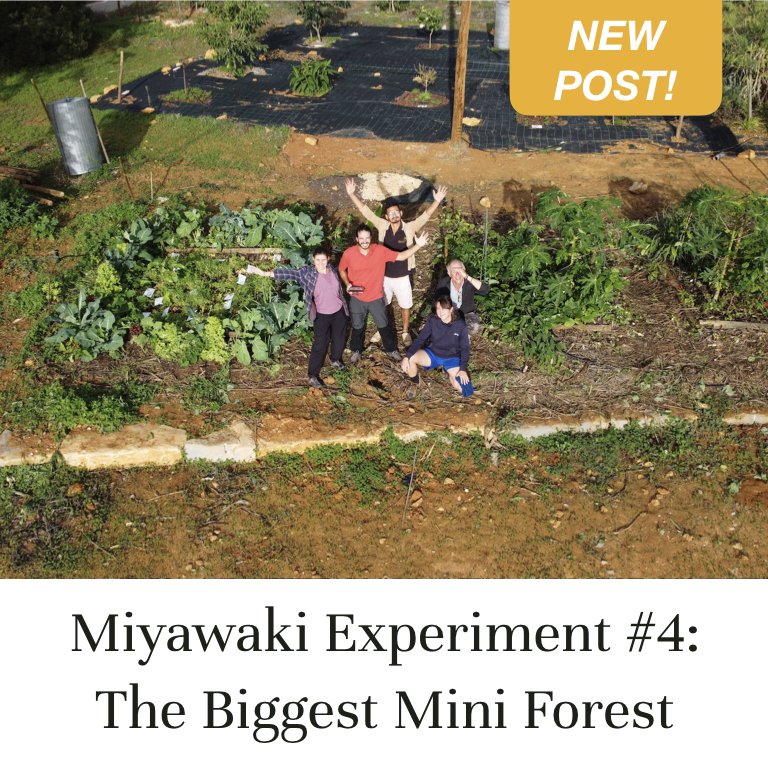Miyawaki Experiment #3 — Semi-organized Food Forest
Our third experiment keeps the high density of #1 but brings a better planning when placing the different species. It also includes fast-growing short-lived plants, an organic windbreak and a small keyhole path in the center.
jump to —> Experiment specifics — Expected results — Data Monitored — Species List — Other Experiments
The benefits of a Food Forest
All our Miyawaki-inspired Food Forest experiments are focused on growing fruit trees and other edible plants, while strongly contributing to improve their surrounding environment.
They offer a number of advantages over traditional gardens, including high productivity, low maintenance, water conservation, soil erosion reduction, wildlife habitat provision and resilience against drought or powerful winds. In addition, Food Forests can be educational and aesthetically pleasing.
Putting the Miyawaki method to practice
We’re doing this by mimicking a natural forest environment:
Enriching the existing soil 🪱🍄
Designing a multi-layered forest 🌳🌿
Planting very densely and at the same time 🌱🌱🌱
Caring for and protecting all the baby trees 💧🪺
Food Forest Workshop, few days after Experiment #3 was planted, July 2023
To find out more details about this way of creating dense, fast-growing forests, check out the main article. There, we also describe how we’re applying its principles across the different experiments at the Orchard of Flavours site!
Food Forest Experiment #3 - Semi-organized
The specifics:
Planting date: July 2023
Area: 40m²
Number of species: 60
Total of plants: 110
Planting density: ~3/m²
Plants were not placed randomly, unlike Experiment #1. The sun-loving plants were planted on the Southwest outer edge. The trees we want to keep in the long-term were all planted at a distance of 1.2m or 1.8m apart
Like Experiment #2, we used a lot of ‘Hero Trees’, edible plants which grow fast and will not live too long, or can be pruned severely for their biomass (Moringa oleifera, Sesbania grandiflora — vegetable hummingbird —, Cajanus cajan — pigeon pea —, Carica papaya, among others). They also provide protection to our more valuable trees in the first years. We were inspired to use Hero Trees by the Syntropic Farming approach
We created a round-shape forest to increase wind resistance
An organic windbreak was added on the Northeast side which is also being used to grow shade-loving vines
A keyhole-shaped path, with a central space, was added, in order to facilitate access to the trees and to let more light enter the forest during the winter
Miyawaki-inspired Semi-organized Food Forest — or Experiment #3 — starting to be planted, during a Food Forest workshop. Sun-loving plants were placed towards the Southwest outer edge
The expected results:
Very fast and healthy growth
Better long term survival rate
Ease of harvest and maintenance
High protective effect (wind and frost)
Fewer pests & diseases
Data monitored:
Plant height
Trunk diameter at 20% of the total height
Food production
Average water usage
Plant survival rate
Pests & diseases
Measuring a tree trunk diameter at 20% height
Diagram of the Semi-organized Food Forest, featuring the keyhole path and distance between plants, according to their size or life expectancy (Hero Trees vs more precious crop-yielding trees)
Make sure to check out our main article on Miyawaki-inspired Food Forests, where we explain the whole concept and how we’re putting it in action at the Orchard of Flavours site. Also, don’t forget to compare this Experiment #3 with all the others already growing:
Species in this Food Forest
Aframomum sp. Uganda dwarf — seed of heaven
Akebia quinata “Cream Form” — chocolate vine
Akebia quinata “Silver Bells” — chocolate vine
Akebia trifoliata “Big Fruit” — three leaf chocolate vine
Aloysia triphylla — lemon verbena
Alpina galanga — galangal
Alpina zerumbet — shell ginger
Annona mucosa “Humongus” — wild soursop
Artemisia absinthium — common wormwood
Averroha carambola “Arkin” — carambola
Bixa orellana — achiote
Cajanus cajan — pigeon pea
Capparis spinosa “Inermis” — thornless caper
Carica papaya “Siluet” — papaya
Carica pentagona (Vasconcellea × heilbornii) — babaco
Carica quercifolia — oak-leaved papaya
Cymbopogon citratus — lemongrass
Eugenia anthropophaga — banana pitanga
Eugenia brasiliensis — Brazilian cherry
Eugenia candollena — rainforest plum
Eugenia involucrata — Rio Grande cherry
Eugenia selloi — pitangatuba
Eugenia speciosa — ibaijuba
Eugenia uniflora — Surinam cherry
Fortunella margarita — kumquat
Fragaria x ananassa — strawberry
Garcinia intermedia — lemon drop mangosteen
Hemerocallis “Stella de Oro” — daylily
Inga sessilis — inga macaco
Inga spectabilis — machete ice-cream-bean
Kadsura coccinea — Japanese kadsura
Lavandula angustifolia — lavender
Litchi chinensis “Kway May Pink” — lychee
Malpighia emarginata — Barbados cherry
Mangifera indica “Tommy Atkins” — mango
Melicoccus bijugatus — Spanish lime
Monstera deliciosa — delicious monster
Moringa oleifera — moringa
Murraya koenigii — curry tree
Musa “Chini Champa” — banana
Origanum majorana — marjoram
Origanum syriacum — Syrian oregano
Pandanus amaryllifolius — pandan
Passiflora edulis — passionfruit
Passiflora edulis f. flavicarpa — yellow passionfruit
Pereskia aculeata Godseffiana — golden ora-pro-nobis
Pereskia grandifolia — rose cactus
Plinia cauliflora — jabuticaba
Psidium cattleianum — strawberry guava
Psidium guineense — Brazilian guava
Saccharum officinarum “Ko honua ula“ — black sugarcane
Salvia elegans — pineapple sage
Sesbania grandiflora — vegetable hummingbird
Solanum abutiloides — dwarf tamarillo
Solanum muricatum — melon pear
Talisia esculenta — pitomba
Thymus citriodorus — lemon thyme
Thymus vulgaris — common thyme
Tulbaghia violacea — society garlic
Zingiber officinale — ginger
This article was compiled by Miguel COTTON & Miguel PEREIRA. If you have any questions or suggestions, do not hesitate to contact us. Please write us anytime at miguel@orchardofflavours.com.
